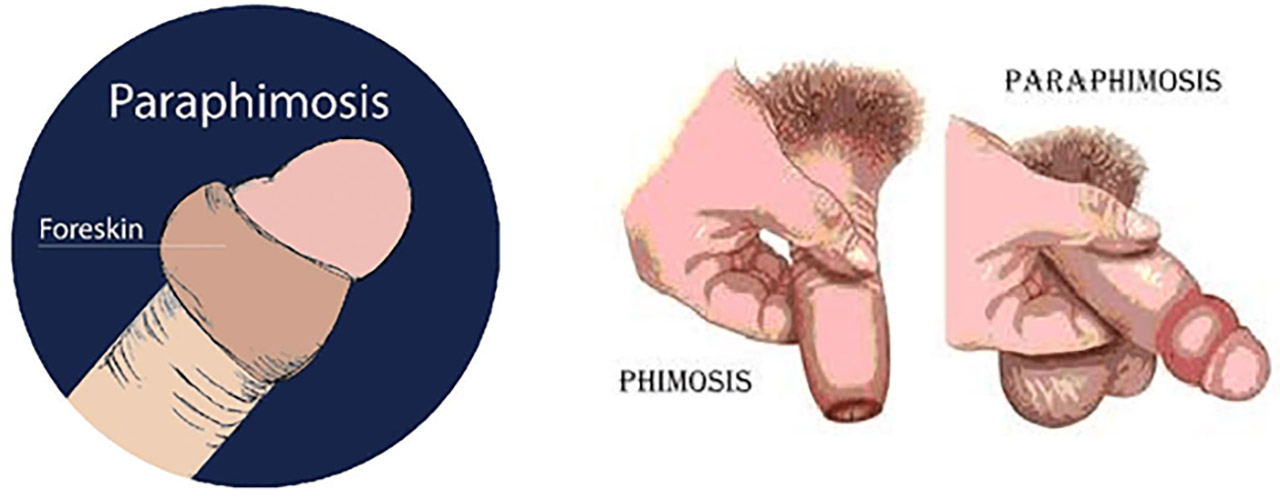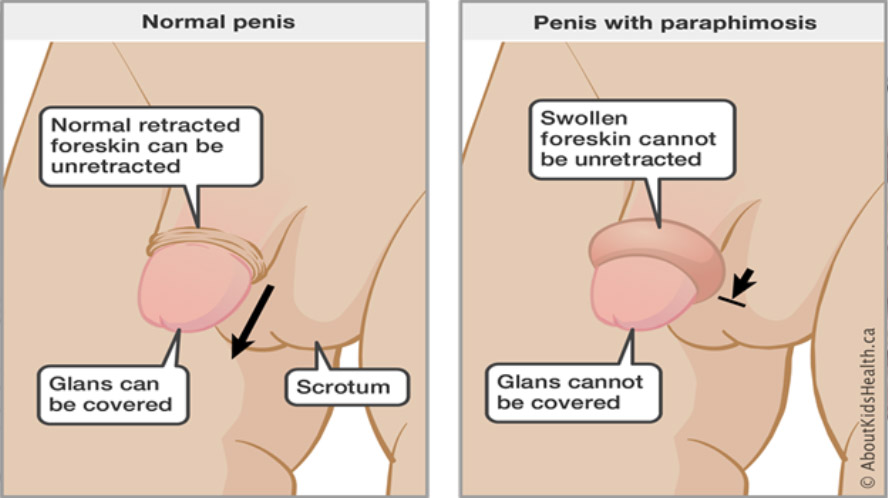Call Us : +91-129-431-0477 | Mail Us : infogoyalhospital@gmail.com
Paraphimosis
Paraphimosis is a severe condition that often happens to males only, and which is related to their penis that hasn't been circumcised. The term circumcision refers to a process in which the foreskin of the male's penis is taken out, often in the initial days after their birth. Paraphimosis occurs when the foreskin gets clung behind the upper part of the penis, which cannot be retracted down into its original position.
Paraphimosis can restrict or block blood flow to the head of the penis. The disorder can result in severe complications if not treated on time. Paraphimosis also mostly happens when a doctor or some healthcare professional mishandles the foreskin. Paraphimosis is an emergency medical condition and must be treated on time.
Complications That Can Happen If Not Treated On Time
Paraphimosis can result in severe complications when left untreated. Paraphimosis can lead to diminished blood flow in the penis. Other complications caused by paraphimosis can lead to:

Causes of Paraphimosis
Paraphimosis typically happens when a doctor or healthcare specialist omits to pull back the foreskin to its usual position after a medical procedure or test.
Other causes of paraphimosis are:
Symptoms of Paraphimosis
The primary symptom of paraphimosis is the incapability to replace the foreskin back to its original position over the upper part of the penis. The foreskin and the head of the penis can get bulged and sore. The head of the penis can further become dark blue or red because of the shortage of blood flow.
Diagnosis & Treatment of Paraphimosis
To diagnose paraphimosis, your doctor will only do a physical test and check the penis. They will likewise inquire about the symptoms and any further complications you may be undergoing with the penis or its foreskin.
The foremost thing the doctor will do to treat paraphimosis is administer the bulge. It is done by pushing the penis with a hand, covering it in a sealed bandage, or utilizing ice. Once the bump is treated, the doctor can pull the foreskin down. In case the foreskin isn't pulled back and gets clung, the doctor may create a tiny cut in the stuck foreskin in order to slacken it. In a few instances, the doctor might do a circumcision.
A full circumcision, or disposal of the foreskin, can be required in highly severe instances. It will likewise stop the disease from occurring again. It is crucial to obey the doctor’s instructions cautiously after the procedure and use the prescribed medicines.

The doctor will guide you on how to wash and care for the head of the penis after the treatment. Contact your doctor immediately if you develop a high fever and still undergo discomfort even after the treatment. These manifestations can mean an infection, which ought to be treated with antibiotics.
Foods/Diets To Follow After The Treatment of Paraphimosis
Just like any other surgery, our body’s capacity to recover instantly depends on the diet and the post-operative care it gets after treatment. If you know what foods to consume after circumcision or treatment of paraphimosis will aid the body in lessening swelling, keeping a healthy immune response, and recovering quickly.
Here’s a list of foods/diets to follow after the treatment of paraphimosis: